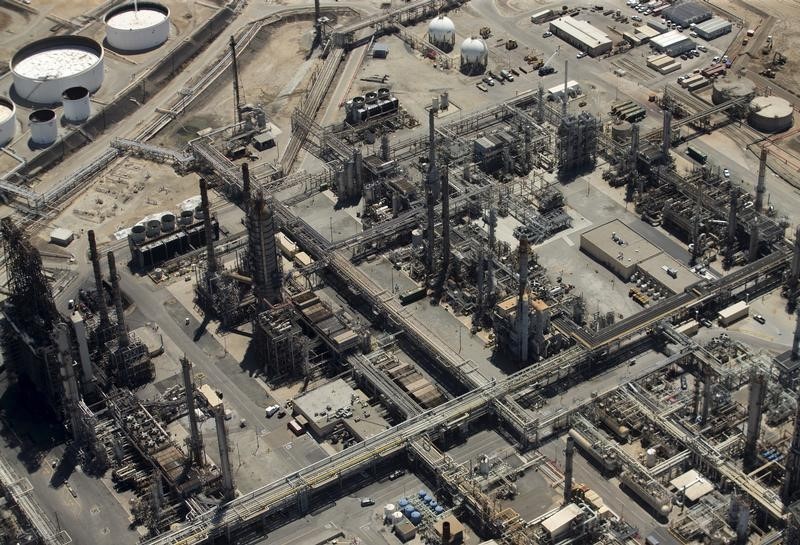By Stephanie Kelly and Jessica Resnick-Ault
NEW YORK (Reuters) - Jet fuel prices are at six-year highs, and part of the reason is linked to record U.S. shale crude production and the unique properties refiners contend with when they refine that oil.
The United States produced about 4.7 million barrels per day of crude from shale formations in 2017. U.S. refiners have been using more of that abundant oil to manufacture diesel, gasoline and jet fuel.
Shale crude is younger than some other types of crude, so it differs somewhat from oil from other formations. The oil is a bit "waxier," like wax applied to skis, said John Jechura, a professor of practice in chemical engineering at Colorado School of Mines.
Refiners have found that when making diesel, their second-most common product after gasoline, they need to take measures to offset that waxiness to make the fuel useable for truck and car engines.
One option is to add kerosene and other components commonly found in jet fuel, market sources told Reuters. However, that reduces the available pool of jet fuel at a time when strong economic growth has boosted air travel.
Even though the shale boom has provided U.S. refineries with more domestic oil, its properties have introduced challenges.
Not all refiners can make jet fuel, and those that do must carefully allocate resources between jet fuel and its close chemical cousin, diesel, which is also in high demand.
"Some jet fuel has been diverted to the diesel pool because diesel demand is quite strong this year in the U.S., particularly on the East Coast," said Amrit Naresh, global distillate analyst at ESAI Energy.
Prices for jet fuel began to rise substantially in April. On April 20, jet hit 4.50 cents per gallon above the ultra-low sulphur diesel futures (HOc1) benchmark on the New York Mercantile Exchange. That was the highest since December 2014, excluding a post-Hurricane Harvey spike last year.
Jet fuel last traded at 0.75 cent a gallon above futures, traders said. Prices have not been this high in June since 2012. With diesel futures at about $2.15 a gallon, that puts jet fuel at $2.16 a gallon.
This summer, U.S. airlines expect 3.7 percent more passengers than they carried last summer, according to the industry group Airlines for America.
Still, high fuel costs are squeezing airline profits. The International Air Transport Association on Monday forecast airlines' combined profits would be 12 percent lower than it had expected in December, largely because of costlier fuel.
U.S. production of kerosene-type jet fuel totalled nearly 1.78 million barrels per day in March 2018, data from the U.S. Energy Information Administration (EIA) showed. Imports of jet fuel declined in the first quarter, adding to the squeeze.
Unplanned shutdowns at East Coast refineries also helped push jet fuel prices higher this year, said Sandeep Sayal, vice president in the refining and marketing group at IHS Markit.
Jet supplies have also come under pressure as some refiners have found it more profitable to make diesel as regulatory costs associated with that fuel have fallen, said Neil Earnest, president at consulting firm Muse, Stancil & Co. in Dallas.
(For a graphic on jet fuel price differentials, see: https://tmsnrt.rs/2JcRfSI)
Refineries have other options to reduce waxiness, Earnest said. They can use more specialty additives that cut wax, or drop sludgier parts of diesel into other refining units to produce gasoline and other fuels.
But Jechura said shale crudes tend to have waxy components distributed more evenly through the oil, making it more difficult to just re-route heavy components.
